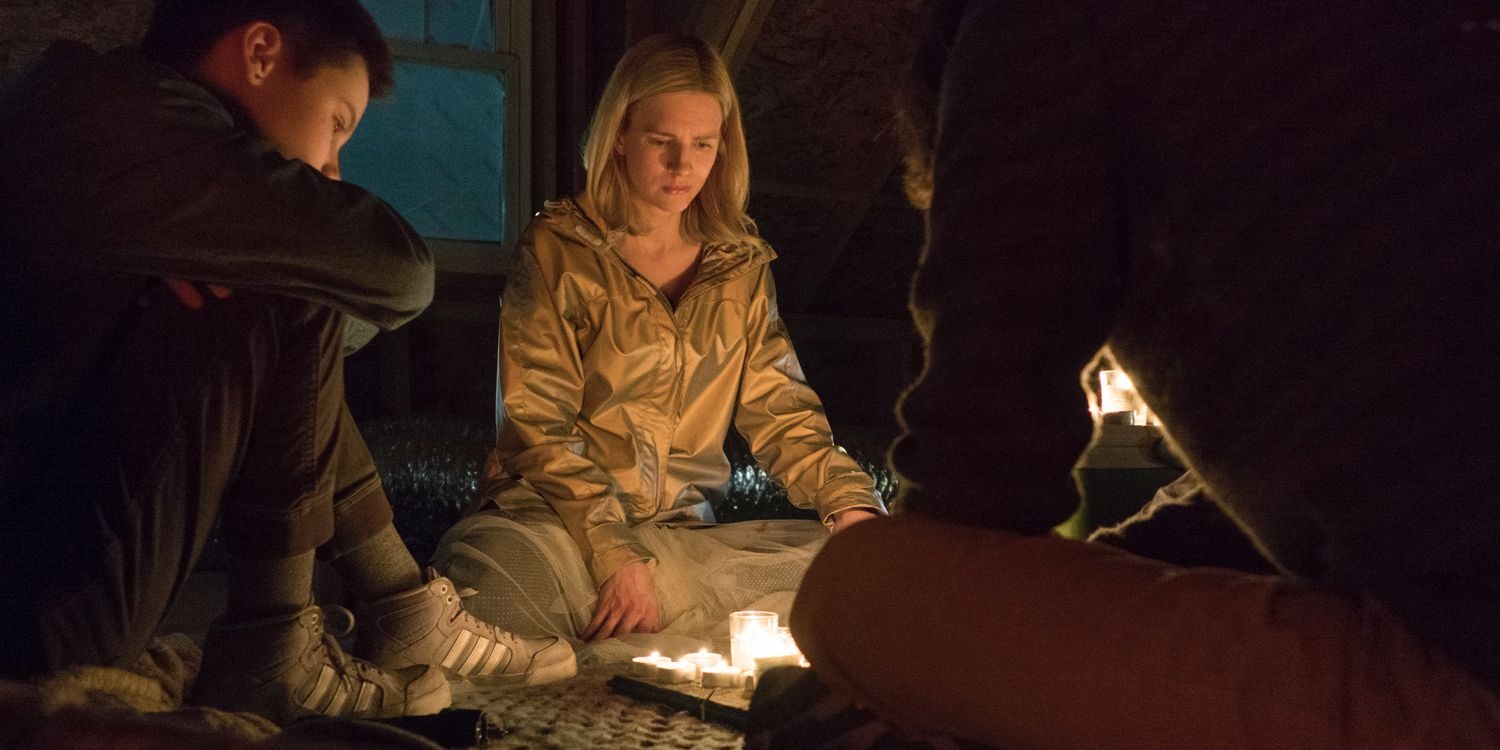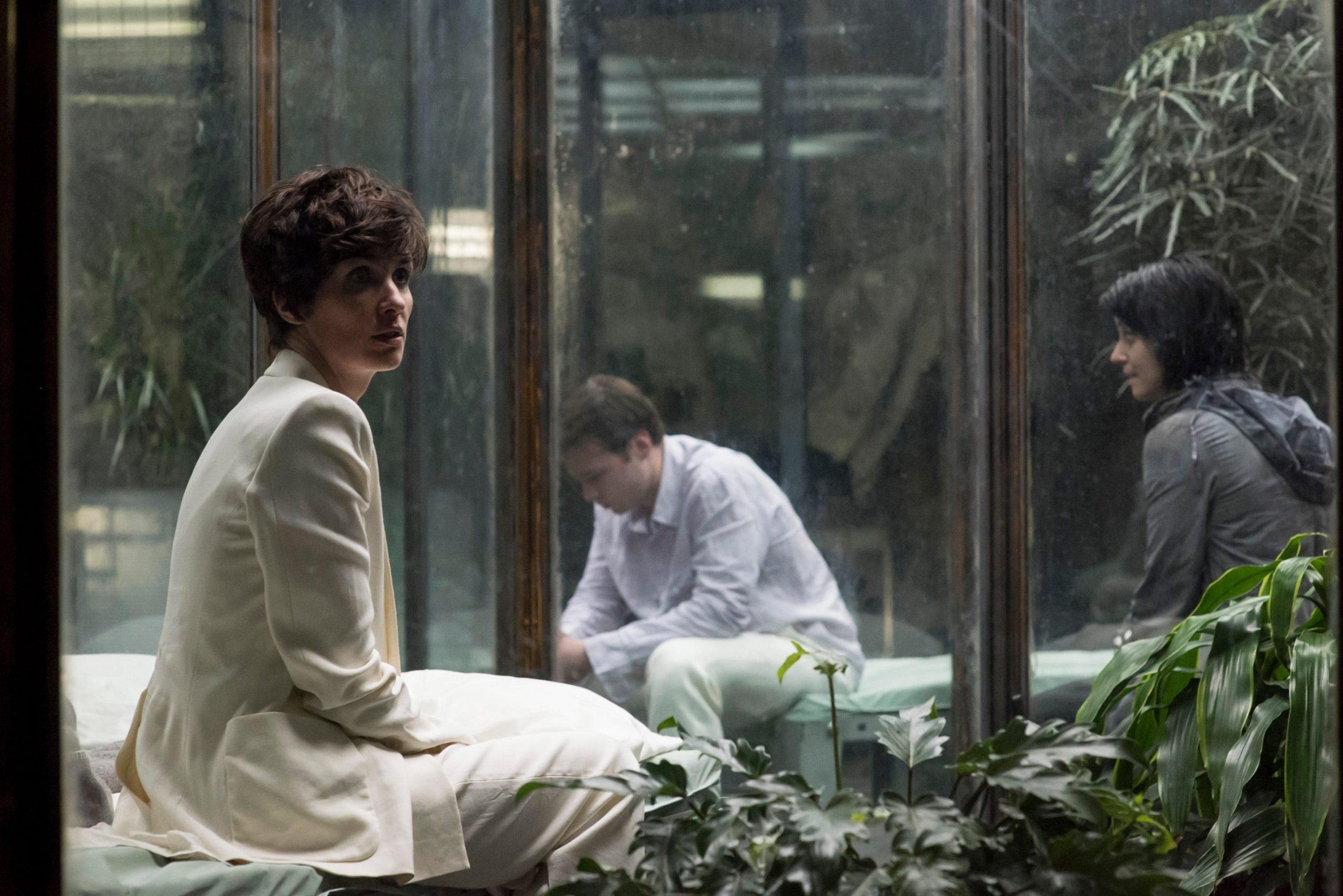To better understand what transpired in the eighth episode, it’s important to go through the events in OA’s story step by step. You can skip ahead if you’re already familiar with the details. OA claims she was born in Russia in 1987 to a wealthy father who owned a metal mine.
She frequently experienced vivid nightmares where she felt trapped in an “aquarium,” and each time this happened, her nose would bleed. Eventually, she learned that these unsettling dreams were premonitions. One day, the school bus she was on was deliberately driven into a lake.

This was a targeted attack by a criminal group called the Voi, who were aiming to intimidate the children’s rich parents. OA died in the incident but was transported to what seemed like an alternate dimension where a woman named Khatun awaited her.
Faced with the choice to stay or return, OA chose to go back to Earth. However, Khatun took her eyesight in exchange, so that OA wouldn’t have to witness the suffering that lay ahead. OA was sent to the United States to live with an aunt, as her father believed it would be safer for her there.
It wasn’t long before she received the tragic news that her father had been killed, after which she was adopted by Nancy and Abel. Throughout this time, she continued experiencing strange dreams and premonitions, often sleepwalking and speaking in Russian.
Concerned about her mental health, Nancy and Abel had her heavily medicated for 13 years, following a doctor’s advice. OA believed that her dreams carried messages from her father, telling her that he was still alive and that they would meet at the Statue of Liberty.
On her 21st birthday, she ran away from her overly protective parents and traveled to New York City. However, when she arrived at the statue, her father was nowhere to be found. Instead, she encountered a man named Dr. Hunter Aloysius Percy, whom she later referred to as Hap.
Hap had a deep obsession with understanding near-death experiences (NDEs) and convinced OA to participate in his study. However, upon arriving at his home, OA was locked in an underground cage along with four other test subjects.
She was forced to endure seven years of captivity as Hap repeatedly subjected his prisoners to death, using a drowning tank. During one escape attempt, OA was struck in the head by Hap. In another NDE, she found herself transported to the same alternate dimension, where she met Khatun again.
This time, Khatun gave OA her sight back and instructed her to swallow a bird, a ritual that unlocked a “movement” within her — a series of hand and body movements combined with specific breathing and sounds. Khatun also warned that even more suffering lay ahead.
Khatun told OA, “All five of you must work together as one to avert a great evil.” Eventually, one of OA’s fellow test subjects, Homer, underwent his own NDE and was given his movement. The group’s five movements, when performed together, were supposed to open a portal to another dimension.
OA and Homer soon discovered that these movements had the power to heal people. They managed to revive fellow prisoner Scott and helped a woman suffering from ALS regain her health. This woman eventually provided them with the fifth movement.
However, after receiving the fifth movement, Hap forced OA to leave his house, threatening to relocate the other test subjects so she could never find them again. This marks the point where the series truly begins, with OA seeking a way to reunite with Homer and the other captives.
She jumped off a bridge, hoping that another NDE would allow her to find Homer. Instead, she woke up in a hospital and was handed over to her adoptive parents, who had not seen her in seven years.
The school shooting and the movements
The season finale culminated in an unexpected twist. A male student arrived at the school campus armed with a gun and began shooting. BBA and the four teenage boys, who were all in the cafeteria, began performing the movements that OA had taught them.
This is where the show took a surprising turn. While it might have caught some viewers off guard, this event was subtly foreshadowed in episode five. While BBA was preparing at home, the radio in the background mentioned a shooting that had occurred in a shopping mall.
The report detailed how seven people had been killed, and that the suspect was last seen walking away from the scene, though the audio trailed off before the story was fully revealed. Back at the school, OA’s group of five performed the movements, and the shooter stood frozen, watching them.
Eventually, a cafeteria worker took advantage of the shooter’s distraction and tackled him. In the struggle, the gun went off again, and as the camera zoomed out, we realized OA was also outside, performing the movements. She was shot in the chest when the shooter was subdued.
The scene shifted to OA being rushed into an ambulance. She looked at the group of five and said, “You did it. Don’t you see? I have the will. Can’t you feel it?” As the ambulance drove away, Steve heard a strange whooshing sound.
This was the same sound that Hap had mentioned hearing when he realized that some form of consciousness would leave the body upon death. Steve shouted, “It’s happening!” and chased after the ambulance, calling out for OA to take him with her.
Then, everything went black, and OA found herself in a brightly lit room. As the screen faded to darkness again, she whispered, “Homer?”
So what happened?
How you interpret the finale depends on whether or not you believe OA’s story was real. If you do, it could mean that her premonitions, which she had experienced since returning home, were predictions of the school shooting. In a way, she was unknowingly preparing the group of five to face their own “great evil.”
We know the movements have healing properties, so it’s possible that their combined efforts were enough to heal whatever emotional or psychological pain was driving the shooter. It might not be a coincidence that, on both occasions when the fifth movement was completed, someone was shot and killed soon after.
The first instance was with Evelyn, the sheriff’s wife who had ALS. After OA and Homer healed her using the movement, Hap immediately shot her. A Reddit user, 713hobofredo, explained it this way: “[Evelyn] does the movement, then hugs her husband and gets shot.

The motion of hugging him places her hands over her heart, similar to the way OA’s hands were positioned when she was shot in the final scene.” Prairie’s death might have been essential for her to move through the tunnel of time and space to find Homer again.
That’s why Steve said, “It’s happening.” Their collective efforts succeeded, and Prairie reunited with Homer. But what if the truth is more grounded? What if OA had some sort of mental disorder and her perception of reality didn’t align with others?
It’s possible that the final scene depicted OA waking up in a psychiatric hospital rather than in some alternate dimension. In the finale, French broke into OA’s house while she was staying with her parents in a hotel. He found a violin in her closet and a box from Amazon under her bed.
Inside the box were several books on subjects like the Russian oligarchy, NDEs, angels, and a copy of Homer’s Odyssey. This might suggest that OA fabricated the entire story for the group of five. However, there’s another explanation.
Redditors speculated that Elias, an FBI agent, planted the books and violin in OA’s room. Why else would he have been in her house at night? And why was he so concerned about whether or not French was with others?
Perhaps the FBI wanted to discredit OA’s story, and Elias was there to make sure no one took her seriously. Some things about the books seem suspicious. They don’t appear to have been read much, which seems odd for someone doing research.
Additionally, OA was talking about Homer before she had access to the internet. Once she did, she immediately searched for “Homer Roberts” and found a news video featuring him. While you might argue that she imagined everything, it’s hard not to take that scene as evidence that Homer exists outside OA’s imagination.
The timeline doesn’t align with the idea that OA could have fabricated the story based on books she ordered online. She only got internet access from Steve and, either that same night or the next began telling the group of five her story. There simply wasn’t enough time for her to order books, read them, and concoct a detailed false story.
The show’s creators, Brit Marling (who plays OA) and Zal Batmanglij, have confirmed that the ambiguous ending was intentional.
“I think there is something delicious in the mystery about questioning the storyteller’s truth,” Marling shared. “[…] I think the place it kind of arrives at is that it maybe doesn’t matter as much the details are true because there’s some essential core that she’s imparting that smacks of honesty.”
There are elements of OA’s story that seem to be true, like her childhood in Russia (remember when Abel recorded her speaking Russian in her sleep?) and the scars on her back. Elias also confirms that her medical reports back up her account of being imprisoned, citing her Vitamin D deficiency and other signs of malnutrition.
Her blindness is a focal point for many when trying to determine the truth. One explanation could be that OA’s supernatural experience was entirely imagined or psychosomatic. Zal Batmanglij supports this idea, saying, “I guess I believe the trauma in her story is true.
Maybe she couldn’t tell her story as it happened, but she experienced something. I don’t think the details matter. I think that there are lots of different interpretations. I think that’s what’s going to make it fun if people do connect to it.”
So, do you believe OA’s story? Or do you think the series is a deep analysis of the psyche of someone struggling with a mental disorder? Either way, we’re all eager to know the answer to OA’s final question: “Homer?”
Add this critically talked-about movie to your Netflix watchlist and start streaming today.



